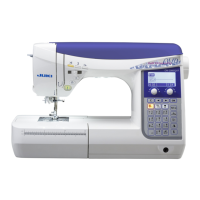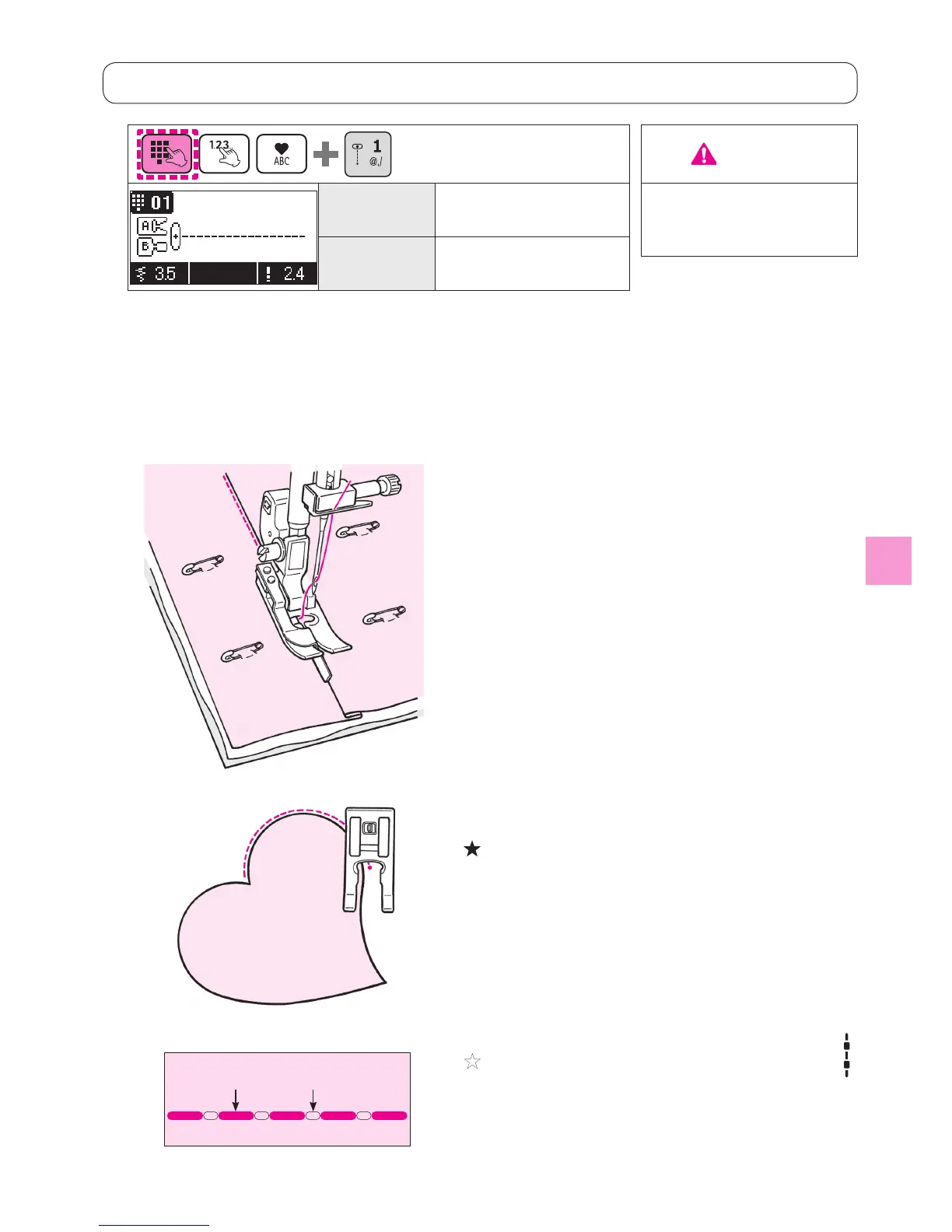69
Stitch in ditch quilting
Pattern No.
Direct 1
Quilting 40
Presser foot
Edge sewing presser
foot (R)
This is for quilting the edge of patchworks and appliqués.
The machine will sew the lower (thinner) side of the fabric
layers. As a result, the stitches will not be noticeable and
have an effect to make the design look three dimensional or
emphasized.
2
Put the guide of the presser foot along
with the crease and sew.
The needle enters behind the guide, so that the edge
of the crease can be sewn.
1
Put the top layer of fabric with patchwork
and/or appliqués, quilting cotton and
bottom layer of fabric together by pin or
basting stitches.
Curved concealed quilting
Use manual buttonhole presser foot (I) or the open toe
presser foot (O). Sew curves by lifting the presser foot and
changing the direction very often.
Also this can be done by free motion with the quilt presser
foot. (Refer to page 74.)
*
If the desired points can not be sewn, adjust the nee-
dle position.
Needle position change: refer to pages 39 and 89.
Attention
Turn OFF the power switch
before replacing the press
-
er foot.
★
Hand look quilt stitches
Handsewn look seams can be sewn by using a transparent
thread as the needle thread.
Quilting 40
Bobbin thread Needle thread

